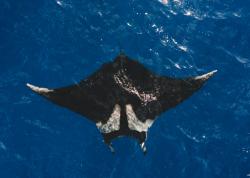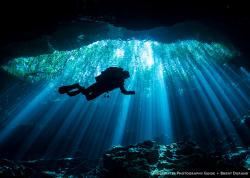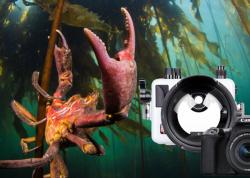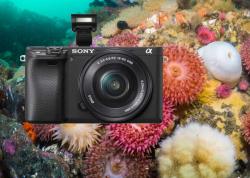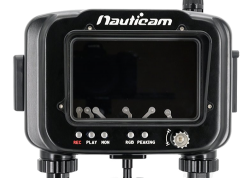Beyond the Resorts: Diving in the Dominican Republic
Situated in the between the rugged Atlantic Ocean and the placid Caribbean Sea, the Dominican Republic is as diverse and history rich as it is famous for mainstream tourism. Normal tourist haunts such as Punta Cana, Puerto Plata, and Boca Chica can make it seem like one big party on the beach with huge cruise ships passing by, and all-inclusive resorts as far the eye can see. But as with all mass tourism, there’s a lot more to be found behind the glitz and glamour. Despite being a tropical Caribbean destination, the Dominican Republic is blessed with deserts, mountains, colonial cities, jungle, caves, and, of course, clear blue water.

Silver Bank, Dominican Republic Humpback Trip
March 28 - April 4, 2020 - Starting from $3,795
Diving in the Dominican Republic
Although it’s the most touristed destination in the Caribbean, the diving in the Dominican Republic isn't as popular as you might think. Certainly, there are better Caribbean dive destinations such as Bonaire, Curacao, Turks and Caicos, Belize, and Honduras. But it would be a huge mistake to rule out the Dominican Republic altogether – especially if you’re going to be there on holiday or attending our Silver Banks Humpback workshop. I recommend this dive destination to any diver who has multiple passions beyond diving including budget friendly vacations, hiking, caves, history, and amazing beaches.
It’s important to note that overall, the sea life will be slightly less abundant than more famous dive destinations in the Caribbean. Whether this is due to invasive lion fish, overfishing, or heavy tourism development, it’s hard to say. In the north it seemed to me to be overfishing and in the south, it seemed to be mass tourism.
Diving in the Dominican Republic can be as diverse as the culture and the terrain. The north (Atlantic) side of the island is blessed with dramatic seaside cliffs and steep underwater topography. The south (Caribbean) side of the island is spotted with quaint tropical reefs and a wide of assortment of reef critters. From a diving perspective, the country can be split into northern (Atlantic) and southern (Caribbean) halves as well.
Diving on the Atlantic Side
Believe it or not, there is still pristine, remote tropical coastline left in the Dominican Republic - most of it borders the Atlantic. Many small towns in the north are hardly touched by tourism, and it can be a more involved and immersive part of the country to experience. Puerto Plata being the exception. If you do make it far from the Southern tourism hubs, be sure to visit the Samana Peninsula which is arguably the most pristine and beautiful part of the country – other than the almost inaccessible Bahia de las Aguilas.
Puerto Plata/Sosua Bay
If you find yourself in the northwest’s Puerto Plata, be sure to check out the excellent reef diving in Sosua Bay. Peuro Plata is also a great location to start trips to the interior or go windsurfing.
Samaná /Las Galeras
The Samaná Peninsula forms the northeastern corner of the country. It’s remote and wild with secluded beaches, lush rainforests, and dramatic coastline. Although Samaná is the launch point for many trips to the famed Silver Banks to see humpback whales, its many rivers result in limited diving opportunity. The dive capital of Samaná is a small village tucked away edge of the peninsula called Las Galeras. Las Galeras is where the regions single road ends at the beach. Despite the surprisingly high number of French expats in this small town, mass tourism has not reached here in full; Las Galeras Divers are the only shop in the area (and an excellent option). Airbnb can be a great way to find lodging and interact with locals.
The diving here is certainly unique. The cream of the crop is found off of Cabo Cabron – a rugged peninsula with sheer cliffs slicing straight into the ocean. The topography continues below the water and features beautiful walls and pinacles covered in coral and sponges. It is, however, rather barren with minimal fish life. This is partly due to the rugged Atlantic Ocean and partly due to overfishing. Hurricanes and storms can make for a difficult dive at times. Octopus are a treat for underwater photographers exploring the reefs and for fisherman providing for local cuisine. For the most part, I would have my wide angle lens here to capture the topography.
The real jewels of the region are the secluded and relatively pristine beaches. For some of them, it’s possible to be the only person there – a rare feat in the Dominican Republic. Trips to Playa Fronton, Playa Rincon, and Playa Madama are a must. Be sure to stick with one of the guides from the main beach in Las Galeras as there have been warnings of infrequent bandits.
Silver Banks
The Silver Banks is renowned for its yearly humpback whale season. From late January to early April whales show up in large numbers in the Silver Banks - far north of the Dominican Republic in the Atlantic. A few boats leave from Samana and take snorkelers and photographers to snorkel with the whales. Click here for our article on Silver Banks.
See also: Swimming with Humpback Whales: Top 3 Destinations
Punta Cana
Punta Cana is world famous for its resorts and beaches. For many, it’s what puts the Dominican Republic on the map. However, the town exists solely for the sake of tourism. Because it’s situated at the eastern tip of the country, it lies between the Atlantic Ocean and the Caribbean Sea. This makes it less than ideal for diving with currents, rough water, and minimal marine life. Diving is still made available by most resorts as an “activity.” If you are a diver, especially an underwater photographer, be sure to make your way down to Bayahibe for the best diving in the country. Some shops will organize a pick-up service to take you to Bayahibe, but it’s a long drive. Bayahibe also has a good assortment of more laid back resorts as a good alternative to the craziness that is Punta Cana.
Diving on the Caribbean Side
Santo Domingo/Boca Chica
Santo Domingo is the political and cultural capital of the country. It’s where Columbus established his first colony in the new world and features an amazing amalgamation of indigenous (Taino), Spanish, and African tradition. The colonial zone is a UNESCO world heritage site and should certainly be visited it you are near Santo Domingo. The Ozama river empties into Santo Domingo, polluting the Caribbean in front of the city, and therefore, it isn’t recommended to dive there. There have been recent efforts to clean up this area.
However, 30 km east of Santo Domingo is Boca Chica – a popular beach/city attracting many Dominicans from Santo Domingo. Boca Chica offers fairly good diving with wrecks in the La Caleta Underwater National Park. Though there are resorts in the area, Boca Chica isn’t always kid friendly.
Bayahibe: Best Diving in the Country
Bayahibe is a smaller resort town situated on the south east corner of the country, ten miles from the port of La Romana. It features tranquil Caribbean beaches and the best diving in the country. With a variety of dive operations to choose from, it’s the scuba capital of the Dominican Republic. The diving in Bayahibe is calm and idyllic, with patchy Caribbean reefs lining the coasts.
The marine life featured here is mostly small and macro with eels, shrimp, squid, small reef fish, blennies, and rays. However, there are some sites that are better for wide angle. Caribbean waters around Bayahibe are blessed with an amazing assortment of beautifully shaped, rainbow-colored sponges. Visibility is almost always excellent as the Caribbean Sea is calmer than the Atlantic.
Isla Catalina
The wall and the aquarium at Catalina Island are widely considered to be the two best sites in the Dominican Republic. They are a little more expensive to get to as you must take a dive boat from Bayahibe for a day trip to the island. It is well worth it. The wall features a little current, massive colorful sponges, and schools of fish. The aquarium is similar to Bayahibe’s other reefs with more abundant and diverse life, as well as better visibility.
Peñon
Peñon is situated just south of Bayahibe in a national park. This is probably the best site in the Dominican Republic for macro photography with the opportunity to see Caribbean reef squid, a large variety of reef fish, cleaner shrimp, seahorses, octopus, squat lobster, and the occasional nurse shark.
Saona Island
Saona Island is the most famous island destination in the Dominican Republic. It gets a lot of tourist traffic, but there is good diving and can be visited in conjunction with Peñon.
St. George Wreck
Situated just off the town of Dominicus (Bayahibe), the St. George wreck is my favorite site in the Dominican Republic. The wreck lies in 144ft/44m of water with the top at 50ft/15m, so it is an advanced dive. In fact, many dive operations can be a little gung-ho about depth and penetration on this wreck. If you aren’t certified for wrecks/depth or don’t feel comfortable penetrating the wreck, please don’t (although it is a relatively open and easy penetration). The ship itself was a 240ft merchant ship that was suck in 1999 as an artificial reef. Lots of open deck space and a large hull make for a fun dive!
The highlight of this wreck is the sponges. It’s so encrusted that you can’t even see the original metal in many places. Larger, non-encrusting sponges form a variety of interesting shapes that dot the wreck. Furthermore, large barracudas, schools of reef fish, and large numbers of spiny lobsters frequent the wreck. Unfortunately, invasive lionfish are also prevalent, but the people of Bayahibe are making large efforts to eradicate them and must be commended.
Cave Diving
There are many caves situated throughout the country. Bayahibe is especially well known by cave divers. Some are accessible, and others are definitely for more serious cave divers. If you are going cave diving, experience and proper certification is an absolute must; it is important to pick the right shop to go with.
Topside Activities
The Dominican Republic is all about its topside activities from luxurious resorts to hiking to caving to its glorious beaches. These activities are why many people come to the Dominican Republic. If you’d like a party on the beach, go to Punta Cana. If you’d like a relaxed beach with full amenities – Dominicus/Bayahibe is the place for you. If you’d like seclusion and adventure go north to the Samana Peninsula. The best hiking in the country is found in the interior and Puerto Plata makes a good staging point. Puerto Plata is also well known for its kite surfing. The Samana Peninsula is also excellent for hiking. Caves are found throughout the country and are a lot of fun to explore. But bring proper light and don’t go anywhere you shouldn’t. It’s easy to get lost!
The Best Time of Year to Dive
As with many other Caribbean destinations – the Dominican Republic can usually be dived year-round. However, it’s important to note that there’s always the possibility of a hurricane ripping through from June through October. On the Atlantic side, summer sea conditions are better as winter storms can bring down visibility. On the Caribbean side the winter actually has better sea conditions than the summer. Water temp averages from 76F/24C – 83F/28C with the Atlantic usually being a degree or two colder. June to November is rainy season, but rain is sporadic and not as heavy as other places in the tropics. This is the offseason and the best time to get travel deals.

Budget
Compared to other Caribbean destinations, diving and accommodation in the Dominican Republic is somewhat cheap. Generally, the cost is $40 USD per boat dive not including equipment. Equipment is often rented at $10/day. As far as I can tell, there aren’t many shore diving spots in the DR. However, many shops are willing to drop the price slightly if you purchase a dive package with multiple dives. Food is about $20 per day per person if you’re on a budget and more if you aren’t. Accommodation can be about $40 per day with Airbnb if you’re on a budget. A cheap all-inclusive resort starts for about $120 per day. Of course, luxury all-inclusive resorts are prevalent as well. If you're not convinced, you can use this handy destination finder to filter options including budget and weather.
Getting There
International flights to the Dominican Republic are popular from the Eastern Seaboard, Europe, and Latin America. Major international airports exist in Punta Cana, Santo Domingo, La Romana, Puerto Plata, and Samana. The long-distance bus system is very good, cheap, and relatively efficient. Sometimes rides across the country can take a full day. Taxis are very expensive and often charge flat rates. Motoconchos or motorcycle taxies are inexpensive and great for riding around small towns, but they can be a little dangerous. Guaguas are smaller and cheaper short distance mini-buses. They are often crowded but can serve as the only way to get to some towns without hiring a taxi. It can be a little confusing to travel this way at first, but locals are often very kind about helping people find their way.
In Conclusion
If you are looking for more than a dive resort or liveaboard during your travels, the Dominican Republic is a great place to experience a mix of cultures, natural beauty, and tourist amenities and still get some diving in. In fact, the diving can be absolutely stunning with Caribbean reefs, wrecks, walls, and diverse sea life. Both macro and wide-angle photographers will not be disappointed. However, if you are looking for big pelagic animals and larger reef creatures such as turtles, the Dominican Republic might not be the dive destination for you – unless you go to Silver Banks for the humpback whales. But by Caribbean standards, it is a budget destination with cheap flights, accommodation, and diving. It’s a great spot for younger travelers and retirees to stretch their vacation slightly longer than they could in a place like the Bahamas or Turks and Caicos. So, if you want your first taste of diving and taking photos in the Caribbean, it is certainly not a bad place to start!

Silver Bank Humpback Trip
March 28 - April 4, 2020 - Starting from $3,795
RECOMMENDED ARTICLES
SUPPORT THE UNDERWATER PHOTOGRAPHY GUIDE:
The Best Service & Prices on u/w Photo Gear
 Visit Bluewater Photo & Video for all your underwater photography and video gear. Click, or call the team at (310) 633-5052 for expert advice!
Visit Bluewater Photo & Video for all your underwater photography and video gear. Click, or call the team at (310) 633-5052 for expert advice!
The Best Pricing, Service & Expert Advice to Book your Dive Trips
 Bluewater Travel is your full-service scuba travel agency. Let our expert advisers plan and book your next dive vacation. Run by divers, for divers.
Bluewater Travel is your full-service scuba travel agency. Let our expert advisers plan and book your next dive vacation. Run by divers, for divers.



























